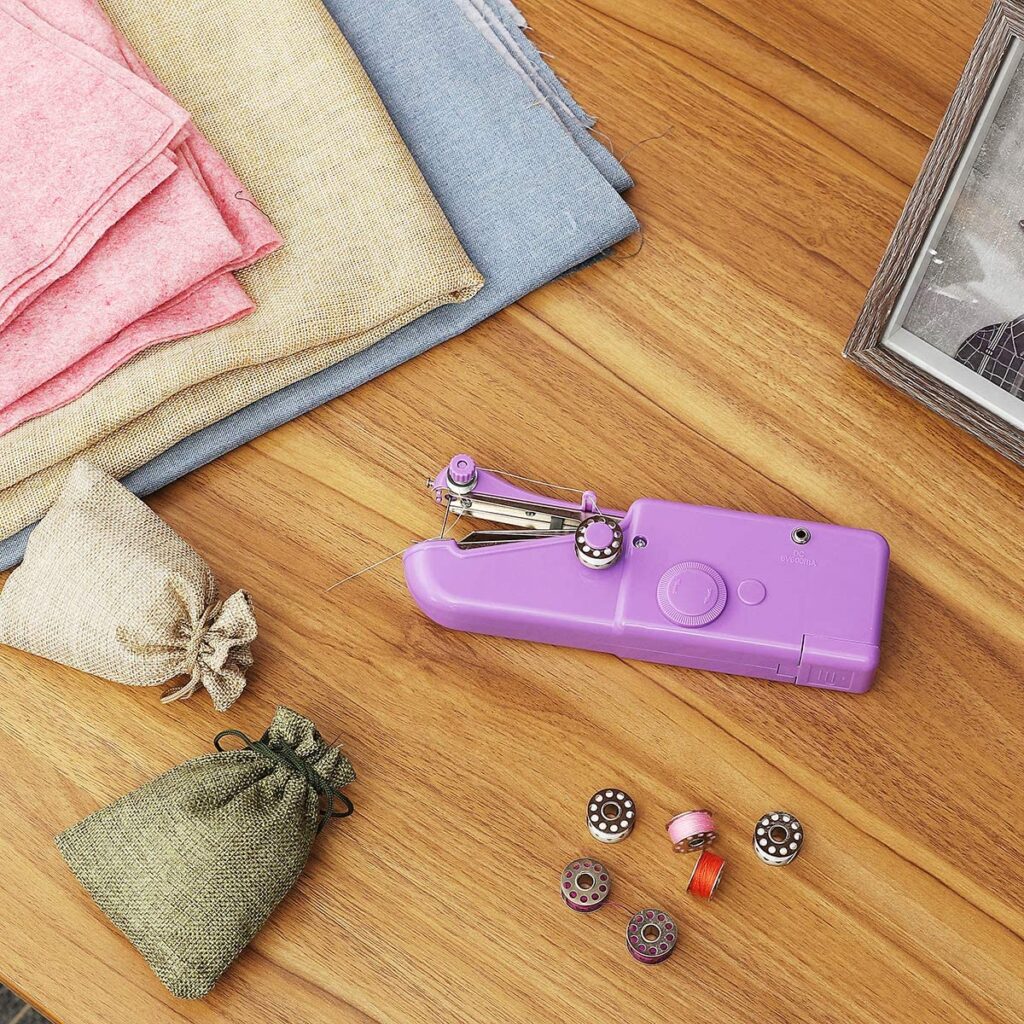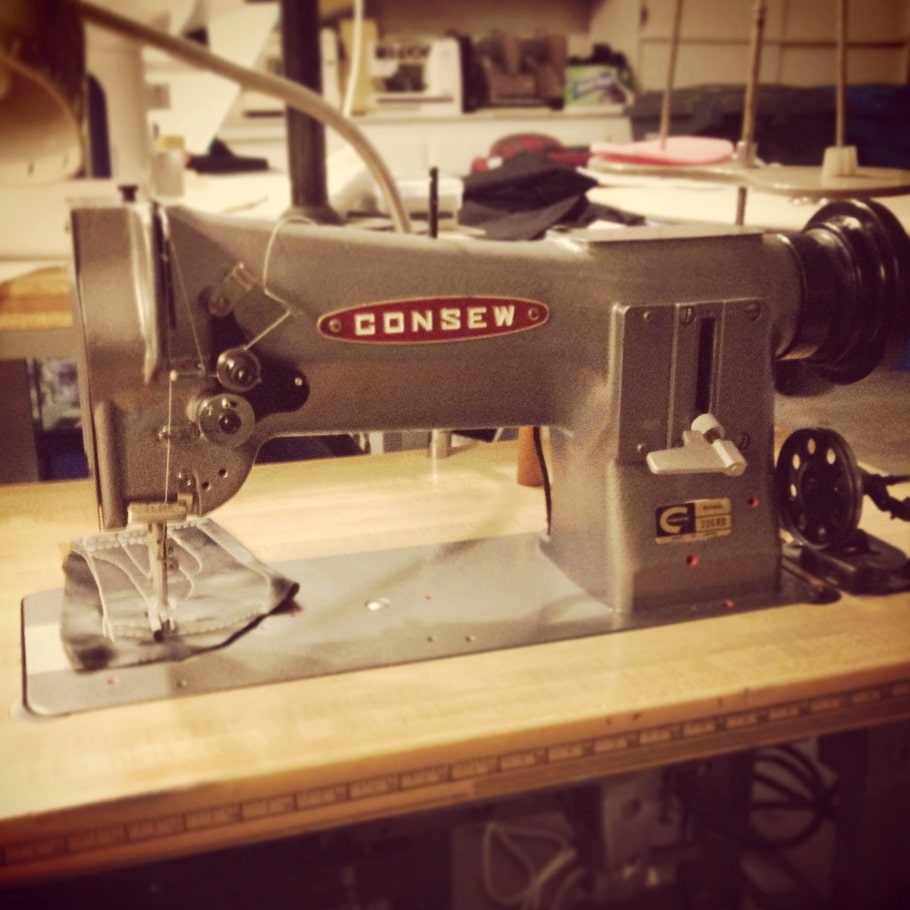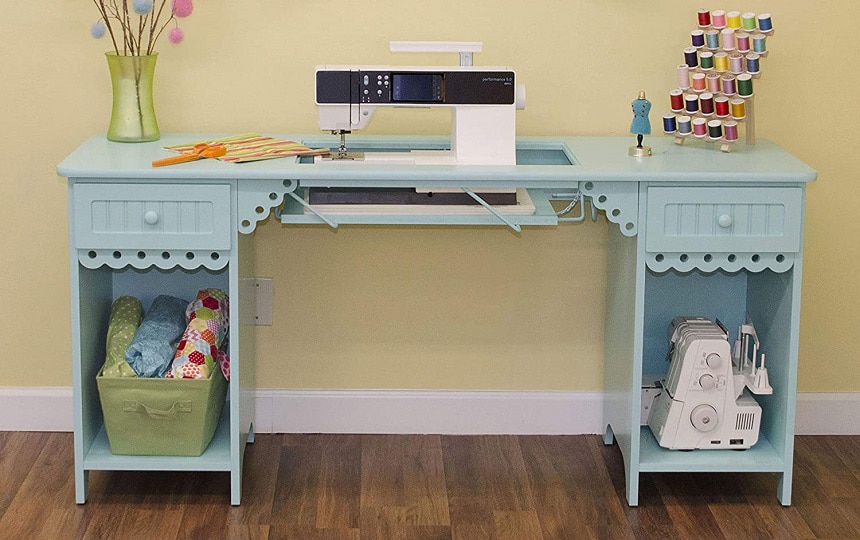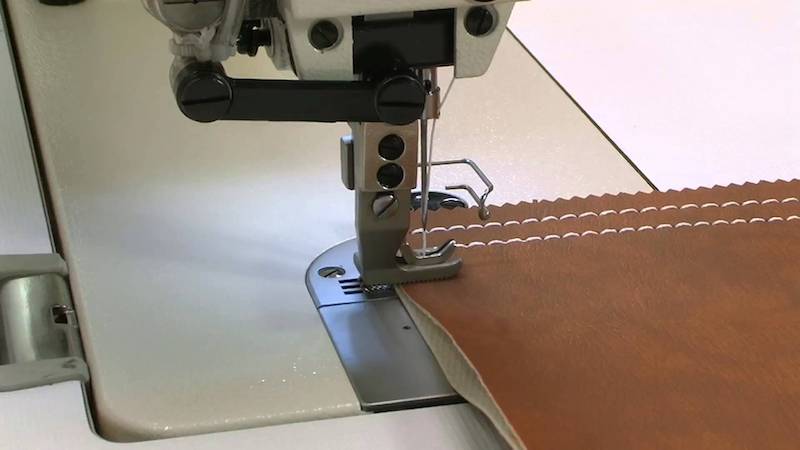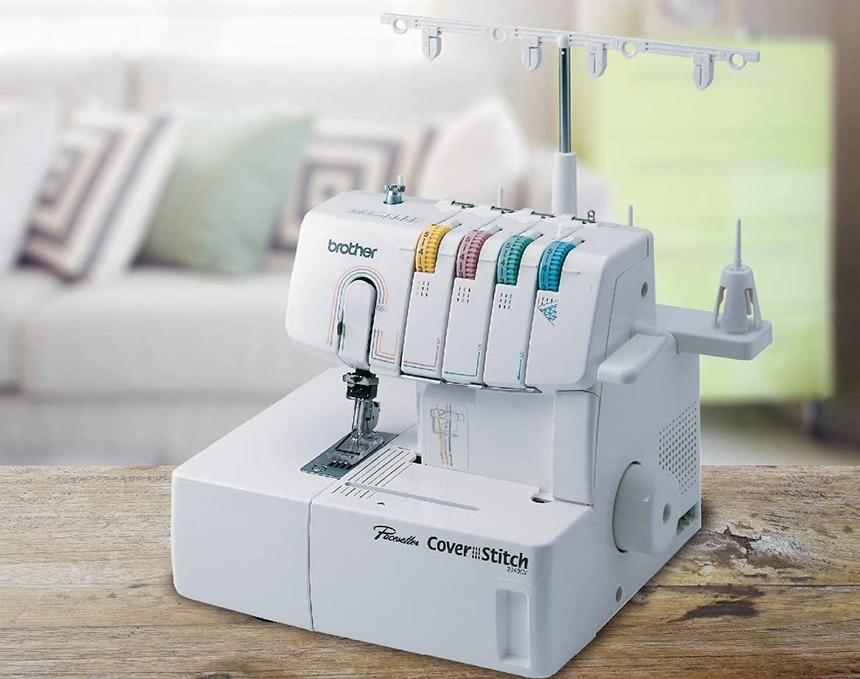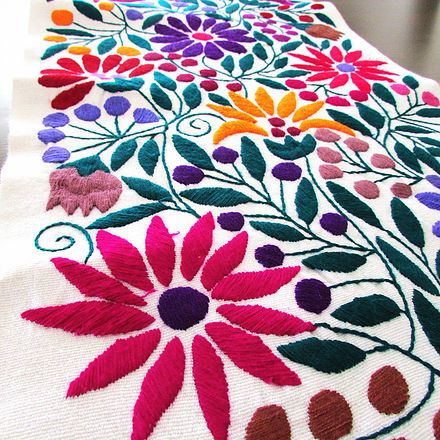

Quilting is becoming more and more popular these days, especially with the increased prevalence of TV shows like “Long Island Medium” (a show where a woman claims to be able to communicate with people who have passed away). Many quilters love seeing their handiwork come to life in this way – particularly if it’s something that they’ve made for someone else to use or treasure.
If you want to try yourself as a “quilter” or already have enough skills, it can be challenging to pick a suitable device. When compiling a list of the best long arm quilting machines, we paid special attention to motor speed, size, and functions of stitches, throat space, and other essential points. Here you will find the machines for beginners with user-friendly controls and those with pro features for large projects. Also, there are compact and portable models for small workspaces and the ones that take up more space. And if the stitch quality is a decisive factor for you – we got you covered!
More features: 7″ color touchscreen; front handlebars with control buttons; needle up/down function; quilt alarm and timer
King Quilter ELITE II is an ideal machine for professional quilters. This model has a touch screen panel that allows you to change the stitch width and length easily. It can sew up to 2,200 stitches per minute, and it offers you control at all times. It also comes in 10 ft. and 12 ft. frame sizes. You won’t have to worry if the stitch quality is poor because the machine offers consistent stitching performance in different fabric types.
Some features make this quilting machine different from others on the list. Aside from the 7-inch color touchscreen, which enhances the use of this quilter, it set itself apart from other models with a wide range of reliable stitch features. You can select precision modem, basting stitch, or cruise mode. There are also options for between 4 and 22 stitches per inch.
More features: pinpoint needle laser; adjustable spool tray and thread mast; Synergy Stitch regulation; quilt alarm and timer
The Handi Quilter Infinity has an automatic needle threader, a jam-resistant rotary hook system, and a self-aligning presser foot. You can adjust this product to fit your specific needs with 26” of throat space and a 10 or 12 feet frame. If you are looking for high-speed quilting, the Handi Quilter Infinity is the machine for you. It can sew up to 3,100 stitches per minute!
The brand is famous for its long arm machine family, including Sweet Sixteen, Simply Sixteen, Avante, Amara, Fusion, and Forte. Despite being one of the most expensive models of HQ quilting machines on our list, the Infinity is worth every cent with its bulk of unique features like a quilt-view camera with Quilter’s Eye technology.
More features: full-color touchscreen; adjustable handles; controllable LED light; easy-access bobbin
The Grace Company Qnique 19 is a long arm quilting machine with 2,000 stitches per minute. It has 19″ throat space and comes in four frame sizes: 4.5, 8, 10, or 12 feet. This long arm quilting machine offers many features, including controllable LED lighting and a full-color touchscreen interface. Additionally, the Qnique is equipped with a 5-year manufacturer’s warranty.
What sets this model apart from other quilters is the enhanced stitch quality, as it offers built-in stitch regulation. This means that the machine is built to keep up with you or slow down when you do, ensuring that all stitches remain uniform. It also features a large M-Class Bobbin, allowing you to quilt for longer times.
More features: thread-break sensor and alarm; menu-controlled QuiltMaster LED lighting package; Precision or Cruise modes of stitch regulation
The Amara is a long-arm quilting machine that will blow you away with its speed and design. With its 2,500 stitches per minute, the Amara is fast enough to keep up with any top speed quilter or long arm quilter. It comes in 2 different sizes to accommodate any user’s needs and desires (10 and 12 feet). It also features a large throat space of 20” so you can work on much larger projects than ever before.
Like our premium pick, the Handi Quilter Infinity, this quilting machine has the same number of stitches per inch (4 to 24) and 5 basting stitch options. Even though the Amara doesn’t have a bobbing-thread cutter, it still can compete with other models in the HQ long arm quilting machine family.
More features: high-intensity LED lights; Low Bobbin thread indicator; built-in basting stitch; made in the USA
The Baby Lock Tiara lll is a beginner-friendly long arm quilting machine with an array of features that make it great for first-time users. It has a sewing speed of 1,800 stitches per minute 24 high-intensity LED lights that help you see your work more clearly, while the sturdy cast aluminum construction provides extra durability. Furthermore, it comes with a 10-year limited manufacturer’s warranty.
The Baby Lock Tiara lll is definitely a step-up from other beginner models, and this is what makes it better than them. While it’s great for entry-level projects, the machine offers an 8.25-inch throat space and a 16-inch workspace for when the user wants to upgrade to bigger projects. The M class Bobbin also allows for long-term quilting.
More features: LCD display; auto stitch; needle up/down function; extra-large bobbin
The Encore is a long arm quilting machine that features an LCD screen and needles up/down functions. The throat space measures 18″, allowing it to be perfect for any quilter, and it can fit in virtually all homes because of its range in frame sizes. In addition, its quick-release ratchets allow you to tension fabric precisely.
Encore solves a problem that its competitors don’t, and that’s the problem of comfort. It features comfortable grip handlebars with a curve design that eases tension on your arms and muscles. This makes quilting easier. It becomes better with the built-in bobbin winder and large capacity bobbin, which reduce your work.
More features: OLED screen display; motorized bobbin winder included; dual-cone thread towers; multiple accessory ports
The Grace Company Qnique 15R quilting machine has a maximum stitch speed of 1,800 stitches per minute and five different frame sizes. The OLED screen display will allow for easy readability of the stitch length and width and make frame size changes simple. Also, this machine comes in at 42 pounds which makes this machine easy to transport.
Although this machine is small, it offers just as good capability as larger models. The stitch quality is what makes it better than previous models, as it comes with four stitching modes and a user-friendly design. It also comes with a stitching regulation feature that adjusts the stitching based on your movement.
More features: front handlebars with color display; LED light ring; two modes of stitch regulation (Precision / Cruise); manual thread tension control
The Baby Lock Gallant’s manual thread tension control ensures a correct amount of pressure for different fabric types while stitching. The stitch regulator modes allow you to move at your own pace while choosing the best setting for your project. The LED light ring provides an even distribution of lighting to help you see the details of your quilting pattern, and with 1,800 stitches per minute, you’ll be able to get through larger projects quickly.
Like the other model of this brand, the Baby Lock Tiara lll, the Gallant has the same speed, the M class bobbin, and LED lighting. You are even unlikely to notice the difference in their workspace, which is only 1 inch. However, the two modes of stitch regulation, Precision and Cruise, can become a decisive factor for those valuing the freedom of action in quilting.
More features: more than 8 inches vertical space; needle-stop position control; handles any thread: cotton, polyester, rayon, metallics, holographic
The Handi Quilter Sweet Sixteen is a 16-inch long arm quilting machine with 1,800 stitches per minute and more than 8 inches of vertical space. The needle-stop position control makes it easy to create perfect free-motion quilting designs and can handle any type of thread you use. All in all, this is a high-quality product that comes with a 10-year warranty.
Unlike other models of this brand, the Sweet Sixteen has nothing but necessary functions for comfort quilting. At the same time, it has 3 manual mode presets in contrast to the 2 of the HQ Simply Sixteen, which is a plus. This is definitely one of the most affordable options of the HQ long arm machine family that can be essential for those who don’t want to spend too much money but get a versatile working tool.
An ideal long arm quilting machine is one that helps with the longarm stitching process. There are many different types of devices available for this specific purpose, so you need to know what options are out there to find just the right fit for you. You’ll also want to consider who you’re buying this machine for and how much you can afford to spend.
In order to get the most out of your machine, you have to know how it works. Here’s an essential guide that will help you get started.
A long arm quilting machine is a specialized sewing machine designed to make stitching more efficient and accurate. These handy pieces of equipment are good for anyone who enjoys sewing, whether they do it as a hobby or professionally. If you’re new to the world of quilting Trusted Source Quilting: History, Characteristics, & Facts | Britannica Quilting, sewing technique in which two layers of fabric, usually with an insulating interior layer, are sewn together with multiple rows of stitching. It has been used for clothing in China, the Middle East, North Africa, and Europe but is now primarily associated with the construction of bedcovers and wall hangings. www.britannica.com , though, you might be wondering just what this device can do for you.
Long arm quilting machines are designed to move around on one axis over large distances, unlike traditional sewing machines that only can move along two dimensions. The need for efficient movement of quilting machines arose after the creation of long arm quilting machines due to an increased need for more intricate designs.
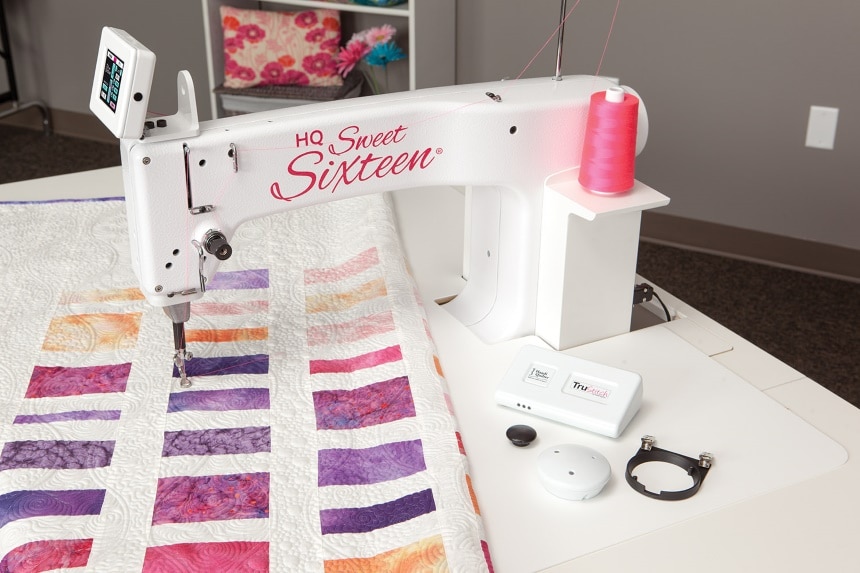
A long arm quilting machine is relatively simple to use and doesn’t require an expert skillset, but there are some basic guidelines for getting started:
Setting up the machine is easy and quick if you follow these steps:
One crucial thing you should know about this machine is that you cannot use a regular sewing needle with it like you would on a conventional device. It requires special needles designed for long arm quilting machines.
The wrong type of needle will likely destroy your work or your machine, so only use the correct ones if you want to avoid problems down the line! When deciding what type of fabric to work with, remember: thicker fabrics should be sewn at slower speeds, and lighter materials can be stitched at higher speeds.
Long arm quilting machines are used by quilters who want to produce beautiful works of art in their fabrics. Long arming is an extremely involved process that can be compromised if you do not take care when selecting your machine. We have put together the things to look for when purchasing your machine, including sewing speed, stitch functions, throat space, price range, and more. Let’s take a closer look at all of them:
There are two main types of long arm quilting machines: home and industrial. Home models are typically smaller and lighter, making them more convenient to use at home, but they don’t hold up as well through extended use. Industrial models tend to be larger and heavier, making them better for professional quilters who might spend a large portion of their time using the machine. However, industrial models can be difficult to move from place to place because of their size and weight.
Home long arm quilting machines typically have a wider throat space than industrial models do but also offer fewer stitch functions overall. Industrial models have a narrower throat space but offer additional stitch functions for more custom work.
Larger home long arm quilting machines tend to be more expensive than smaller models. Still, they also better accommodate larger projects and multiple layers of fabric or other materials. If you typically work on large pieces at home, investing in a larger machine might be better.
Quilting devices sew at different speeds depending on what you need them to do. You shouldn’t have to worry about speed too much for home projects that involve very little stitching. Some industrial models function only as low-speed devices, which means they cannot accommodate the amount of stitching required for high-quality commercial work.
The speed can range maximum of 3,100 stitches per minute, though the average machine has a walking speed between 500 and 1000. If you have never used one before, start with a slower machine at first so you can get used to the process. If you plan to create professional quilts, you should purchase a device that can accommodate higher speeds.
Remember that each machine is different, so it might take some time before you know your optimal speeds for working on certain fabrics.
Quilting machines are generally measured by the “stitch length” in millimeters or stitches per inch. It’s called a wide machine when you have fewer stitches per inch because it takes larger movements to stitch out one stitching line. With more stitches per inch, it’s called a high-speed or fine machine. Generally, you want to choose the highest stitches per inch that your budget will let you go for.
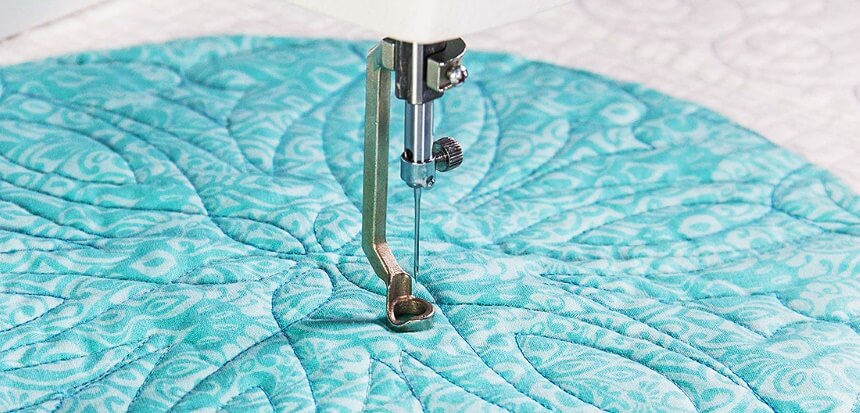
The stitch you use for your project depends largely on the weight of your chosen fabric and how close together you want to sew the pieces. Generally speaking, thicker fabrics need longer stitches, so they don’t come out bunched together when you’re done with your quilting process. Lighter fabrics should be stitched at shorter lengths for a more elegant style. You can adjust these settings while using them just like any other sewing machine: by turning the dial on your device until it reaches the right number. As far as thread colors go, choose one that will stand out against the type of fabric you’re working with on this particular piece. For example, a bright pink thread on a dark blue blanket might look nice, but it probably won’t look as nice on a light pink bedspread.
Most long arm quilting machines have a minimum of 10 stitch functions, providing you with an array of different looks and styles. You can create your own designs or use pre-made ones for the best possible outcome.
Some standard stitch functions include:
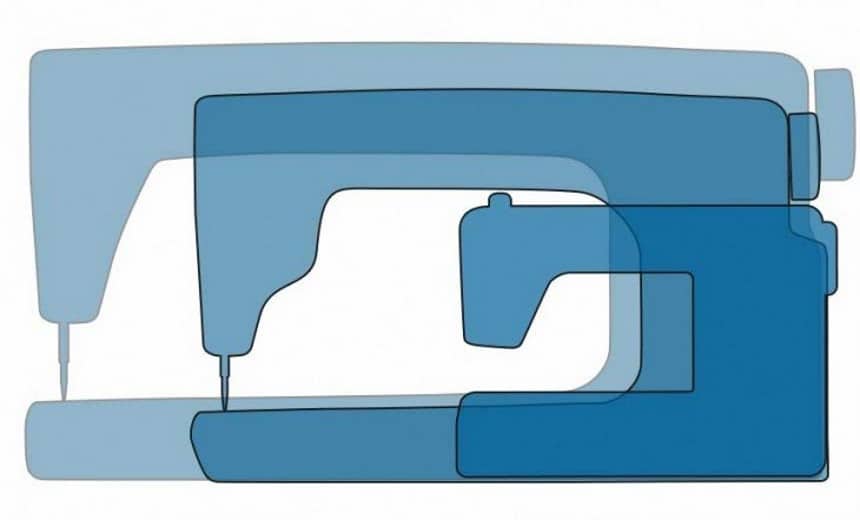
The width of the throat space determines how far your needle can penetrate into the fabric before it needs to pull out and create another stitch. Quilting machines with a wider throat space are more likely to accommodate larger pieces of material because they give you more room for maneuverability as you work on them. The average machine has around 14 inches of usable sewing space, but industrial machines often have 18 or 20-inch throats instead.
An automatic needle threader lets you save time as you work because it helps your machine do half of the work for you.
Not all quilting machines have this feature, but automatic needle threaders can be very helpful if you’re struggling with getting your needles threaded properly. You simply place the thread into the tool, and then it takes over from there, pulling the thread up through the eye on your needle, so you don’t have to do it by hand.
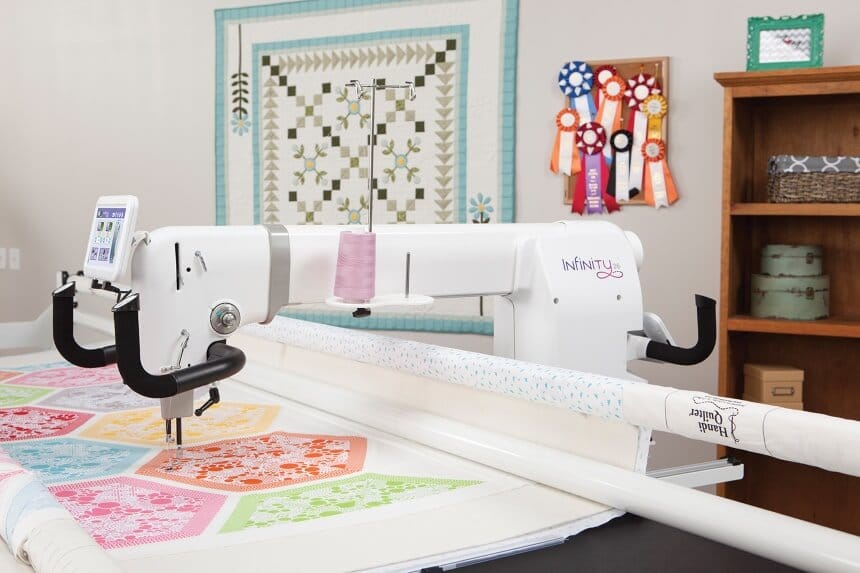
The frame is the hoop that holds your material in place as you use the machine. The larger it is, the easier it will be to keep your fabric taut and wrinkle-free while you work with it. Some devices have a single hoop attached to the top for this purpose, but others have a base and a separate piece that attaches to this base through an opening on one side.
Typically, commercial machines are much longer than home models because they need to fit larger pieces of material. If you plan on working only with smaller projects, a compact model will suffice for most cases. But if you have a poor table or work platform to put your quilting machine on top of, a bigger frame can help level out the device, so it doesn’t rock during stitching sessions.
Before purchasing a quilting machine, make sure that the product comes with at least a one-year warranty. This will protect you in case there’s an issue with your device during this period. Most manufacturing companies offer warranties of some type because they want to establish good relationships with their customers by protecting their products.
Although you can request additional coverage options before buying, keep in mind that if you want to get reimbursed for something wrong with your device, you’ll need to send it back to the company that made it so they can examine it and determine whether or not they should help pay for any repairs or replacements.
If you choose quilting as your new hobby Trusted Source Quilting growing in popularity during COVID-19 pandemic | CTV News Many people looking for a creative outlet while staying at home have turned to quilting as a new hobby. ottawa.ctvnews.ca , you should keep in mind that it can be very expensive. One of the most critical factors in your long arm quilting machine is going to be how much it costs, so think about what features you want and need before you step into the store. It’s also important to consider whether or not you’re interested in doing free motion quilting if that’s something that interests you.
When buying new quilting machines for professional use, you can expect to spend somewhere between $4,000 and $10,000 on most models. Although prices vary according to size, the number of features they have, their brand name, and other factors, this is a safe estimate for how much most people pay to get better quality equipment.
Manufacturers often release limited editions of these products that cost more than standard versions because they come with additional perks (such as free classes or additional software tools). If you plan on making quilting one of your primary hobbies or career pursuits, an expensive version might be worth the extra money so you can get more out of your machine.
However, if you only want something simple to use from time to time, a cheaper model should suffice for your needs.
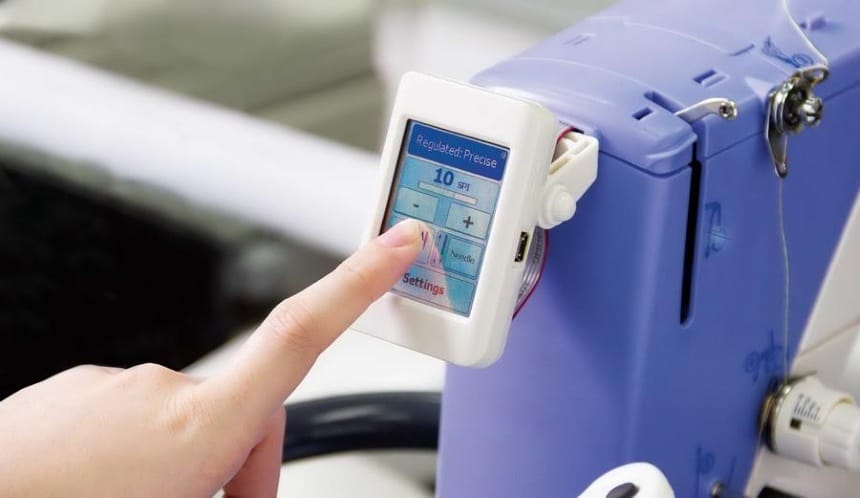
If you have some extra money to spend, look for a product with some additional features to get more out of your device.
For instance, many quilting machines come with an extension table that allows users to create larger pieces of material without taking them elsewhere for sewing. The extensions are mounted on the top part of your base machine, and they hold material taut as you work with it. This is particularly helpful if you’re working on large projects like bed sheets or heavy-duty curtains for commercial buildings.
Other devices include software tools designed to help increase productivity by recording important information about the project. Such programs make it easier for people who work with quilting machines all day long because they use metadata to store information, so they don’t have to keep re-entering it as they work. This can be helpful for people who need to produce large numbers of specialized projects.
A long arm quilting machine is a valuable piece of equipment that helps any quilter make a beautiful, professional-looking quilt. Longarm machines help to do the work fast and efficiently because they eliminate hand fatigue and also give you more control over what’s going on in your quilt. They are much faster to work with than the usual bulky sewing machine, so this is an excellent option if you want to make large projects quickly.
Longarm stitching is probably one of the most popular ways to quilt. It is perfect for the home sewer who doesn’t have extensive equipment or shop space because you can use your longarm machine anywhere.
Out of all reviewed models, we were especially impressed by three of them:
The King Quilter II ELITE is a crème de la crème of quilting machines since it can stitch up to 24 stitches per inch and has a touchscreen that allows you easy access to the stitch settings. Next, the Handi Quilter Infinity offers extremely high-speed sewing with adjustable presser foot pressure for various materials. Finally, the Grace Company Qnique 19. It has controllable LED lighting to make your work easier on the eyes at all hours of the day, and its full-color touchscreen interface allows you to control the machine’s many functions easily.
Due to the complex nature of these devices, it’s wise to do plenty of research before choosing one that matches your budget and skill level. We hope this article has provided you with all of the information you need to select the best long arm quilting machine for your needs!
